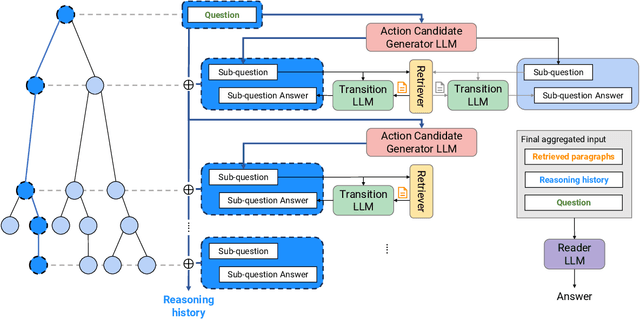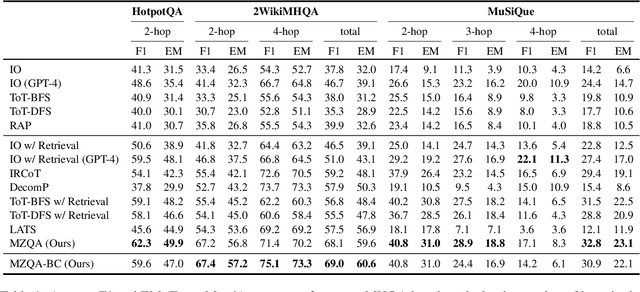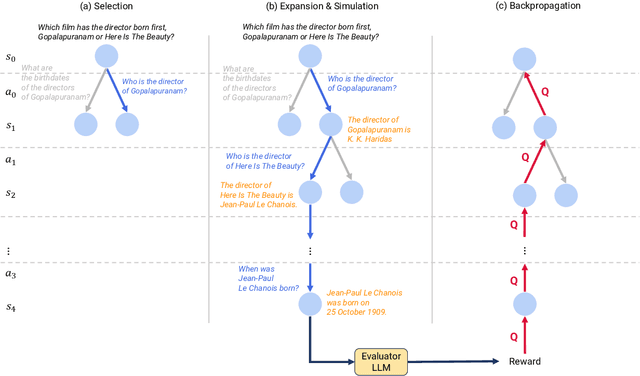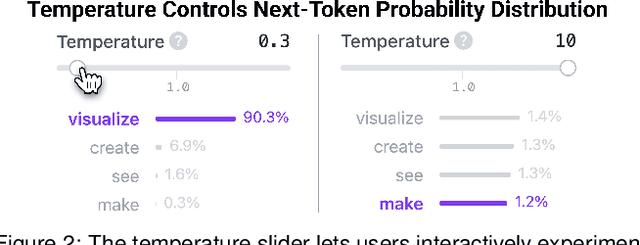Seongmin Lee
Polo
Interpretation Meets Safety: A Survey on Interpretation Methods and Tools for Improving LLM Safety
Jun 05, 2025Abstract:As large language models (LLMs) see wider real-world use, understanding and mitigating their unsafe behaviors is critical. Interpretation techniques can reveal causes of unsafe outputs and guide safety, but such connections with safety are often overlooked in prior surveys. We present the first survey that bridges this gap, introducing a unified framework that connects safety-focused interpretation methods, the safety enhancements they inform, and the tools that operationalize them. Our novel taxonomy, organized by LLM workflow stages, summarizes nearly 70 works at their intersections. We conclude with open challenges and future directions. This timely survey helps researchers and practitioners navigate key advancements for safer, more interpretable LLMs.
Shape it Up! Restoring LLM Safety during Finetuning
May 22, 2025Abstract:Finetuning large language models (LLMs) enables user-specific customization but introduces critical safety risks: even a few harmful examples can compromise safety alignment. A common mitigation strategy is to update the model more strongly on examples deemed safe, while downweighting or excluding those flagged as unsafe. However, because safety context can shift within a single example, updating the model equally on both harmful and harmless parts of a response is suboptimal-a coarse treatment we term static safety shaping. In contrast, we propose dynamic safety shaping (DSS), a framework that uses fine-grained safety signals to reinforce learning from safe segments of a response while suppressing unsafe content. To enable such fine-grained control during finetuning, we introduce a key insight: guardrail models, traditionally used for filtering, can be repurposed to evaluate partial responses, tracking how safety risk evolves throughout the response, segment by segment. This leads to the Safety Trajectory Assessment of Response (STAR), a token-level signal that enables shaping to operate dynamically over the training sequence. Building on this, we present STAR-DSS, guided by STAR scores, that robustly mitigates finetuning risks and delivers substantial safety improvements across diverse threats, datasets, and model families-all without compromising capability on intended tasks. We encourage future safety research to build on dynamic shaping principles for stronger mitigation against evolving finetuning risks.
Can LLM Generate Regression Tests for Software Commits?
Jan 19, 2025



Abstract:Large Language Models (LLMs) have shown tremendous promise in automated software engineering. In this paper, we investigate the opportunities of LLMs for automatic regression test generation for programs that take highly structured, human-readable inputs, such as XML parsers or JavaScript interpreters. Concretely, we explore the following regression test generation scenarios for such programs that have so far been difficult to test automatically in the absence of corresponding input grammars: $\bullet$ Bug finding. Given a code change (e.g., a commit or pull request), our LLM-based approach generates a test case with the objective of revealing any bugs that might be introduced if that change is applied. $\bullet$ Patch testing. Given a patch, our LLM-based approach generates a test case that fails before but passes after the patch. This test can be added to the regression test suite to catch similar bugs in the future. We implement Cleverest, a feedback-directed, zero-shot LLM-based regression test generation technique, and evaluate its effectiveness on 22 commits to three subject programs: Mujs, Libxml2, and Poppler. For programs using more human-readable file formats, like XML or JavaScript, we found Cleverest performed very well. It generated easy-to-understand bug-revealing or bug-reproduction test cases for the majority of commits in just under three minutes -- even when only the code diff or commit message (unless it was too vague) was given. For programs with more compact file formats, like PDF, as expected, it struggled to generate effective test cases. However, the LLM-supplied test cases are not very far from becoming effective (e.g., when used as a seed by a greybox fuzzer or as a starting point by the developer).
LLM Hallucination Reasoning with Zero-shot Knowledge Test
Nov 14, 2024Abstract:LLM hallucination, where LLMs occasionally generate unfaithful text, poses significant challenges for their practical applications. Most existing detection methods rely on external knowledge, LLM fine-tuning, or hallucination-labeled datasets, and they do not distinguish between different types of hallucinations, which are crucial for improving detection performance. We introduce a new task, Hallucination Reasoning, which classifies LLM-generated text into one of three categories: aligned, misaligned, and fabricated. Our novel zero-shot method assesses whether LLM has enough knowledge about a given prompt and text. Our experiments conducted on new datasets demonstrate the effectiveness of our method in hallucination reasoning and underscore its importance for enhancing detection performance.
Effective Guidance for Model Attention with Simple Yes-no Annotations
Oct 29, 2024



Abstract:Modern deep learning models often make predictions by focusing on irrelevant areas, leading to biased performance and limited generalization. Existing methods aimed at rectifying model attention require explicit labels for irrelevant areas or complex pixel-wise ground truth attention maps. We present CRAYON (Correcting Reasoning with Annotations of Yes Or No), offering effective, scalable, and practical solutions to rectify model attention using simple yes-no annotations. CRAYON empowers classical and modern model interpretation techniques to identify and guide model reasoning: CRAYON-ATTENTION directs classic interpretations based on saliency maps to focus on relevant image regions, while CRAYON-PRUNING removes irrelevant neurons identified by modern concept-based methods to mitigate their influence. Through extensive experiments with both quantitative and human evaluation, we showcase CRAYON's effectiveness, scalability, and practicality in refining model attention. CRAYON achieves state-of-the-art performance, outperforming 12 methods across 3 benchmark datasets, surpassing approaches that require more complex annotations.
Zero-Shot Multi-Hop Question Answering via Monte-Carlo Tree Search with Large Language Models
Sep 28, 2024



Abstract:Recent advances in large language models (LLMs) have significantly impacted the domain of multi-hop question answering (MHQA), where systems are required to aggregate information and infer answers from disparate pieces of text. However, the autoregressive nature of LLMs inherently poses a challenge as errors may accumulate if mistakes are made in the intermediate reasoning steps. This paper introduces Monte-Carlo tree search for Zero-shot multi-hop Question Answering (MZQA), a framework based on Monte-Carlo tree search (MCTS) to identify optimal reasoning paths in MHQA tasks, mitigating the error propagation from sequential reasoning processes. Unlike previous works, we propose a zero-shot prompting method, which relies solely on instructions without the support of hand-crafted few-shot examples that typically require domain expertise. We also introduce a behavioral cloning approach (MZQA-BC) trained on self-generated MCTS inference trajectories, achieving an over 10-fold increase in reasoning speed with bare compromise in performance. The efficacy of our method is validated on standard benchmarks such as HotpotQA, 2WikiMultihopQA, and MuSiQue, demonstrating that it outperforms existing frameworks.
Transformer Explainer: Interactive Learning of Text-Generative Models
Aug 08, 2024
Abstract:Transformers have revolutionized machine learning, yet their inner workings remain opaque to many. We present Transformer Explainer, an interactive visualization tool designed for non-experts to learn about Transformers through the GPT-2 model. Our tool helps users understand complex Transformer concepts by integrating a model overview and enabling smooth transitions across abstraction levels of mathematical operations and model structures. It runs a live GPT-2 instance locally in the user's browser, empowering users to experiment with their own input and observe in real-time how the internal components and parameters of the Transformer work together to predict the next tokens. Our tool requires no installation or special hardware, broadening the public's education access to modern generative AI techniques. Our open-sourced tool is available at https://poloclub.github.io/transformer-explainer/. A video demo is available at https://youtu.be/ECR4oAwocjs.
CanonicalFusion: Generating Drivable 3D Human Avatars from Multiple Images
Jul 05, 2024Abstract:We present a novel framework for reconstructing animatable human avatars from multiple images, termed CanonicalFusion. Our central concept involves integrating individual reconstruction results into the canonical space. To be specific, we first predict Linear Blend Skinning (LBS) weight maps and depth maps using a shared-encoder-dual-decoder network, enabling direct canonicalization of the 3D mesh from the predicted depth maps. Here, instead of predicting high-dimensional skinning weights, we infer compressed skinning weights, i.e., 3-dimensional vector, with the aid of pre-trained MLP networks. We also introduce a forward skinning-based differentiable rendering scheme to merge the reconstructed results from multiple images. This scheme refines the initial mesh by reposing the canonical mesh via the forward skinning and by minimizing photometric and geometric errors between the rendered and the predicted results. Our optimization scheme considers the position and color of vertices as well as the joint angles for each image, thereby mitigating the negative effects of pose errors. We conduct extensive experiments to demonstrate the effectiveness of our method and compare our CanonicalFusion with state-of-the-art methods. Our source codes are available at https://github.com/jsshin98/CanonicalFusion.
Interactive Visual Learning for Stable Diffusion
Apr 22, 2024Abstract:Diffusion-based generative models' impressive ability to create convincing images has garnered global attention. However, their complex internal structures and operations often pose challenges for non-experts to grasp. We introduce Diffusion Explainer, the first interactive visualization tool designed to elucidate how Stable Diffusion transforms text prompts into images. It tightly integrates a visual overview of Stable Diffusion's complex components with detailed explanations of their underlying operations. This integration enables users to fluidly transition between multiple levels of abstraction through animations and interactive elements. Offering real-time hands-on experience, Diffusion Explainer allows users to adjust Stable Diffusion's hyperparameters and prompts without the need for installation or specialized hardware. Accessible via users' web browsers, Diffusion Explainer is making significant strides in democratizing AI education, fostering broader public access. More than 7,200 users spanning 113 countries have used our open-sourced tool at https://poloclub.github.io/diffusion-explainer/. A video demo is available at https://youtu.be/MbkIADZjPnA.
ClickDiffusion: Harnessing LLMs for Interactive Precise Image Editing
Apr 05, 2024Abstract:Recently, researchers have proposed powerful systems for generating and manipulating images using natural language instructions. However, it is difficult to precisely specify many common classes of image transformations with text alone. For example, a user may wish to change the location and breed of a particular dog in an image with several similar dogs. This task is quite difficult with natural language alone, and would require a user to write a laboriously complex prompt that both disambiguates the target dog and describes the destination. We propose ClickDiffusion, a system for precise image manipulation and generation that combines natural language instructions with visual feedback provided by the user through a direct manipulation interface. We demonstrate that by serializing both an image and a multi-modal instruction into a textual representation it is possible to leverage LLMs to perform precise transformations of the layout and appearance of an image. Code available at https://github.com/poloclub/ClickDiffusion.
 Add to Chrome
Add to Chrome Add to Firefox
Add to Firefox Add to Edge
Add to Edge